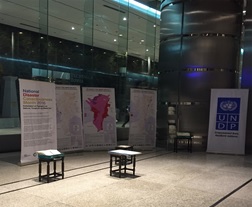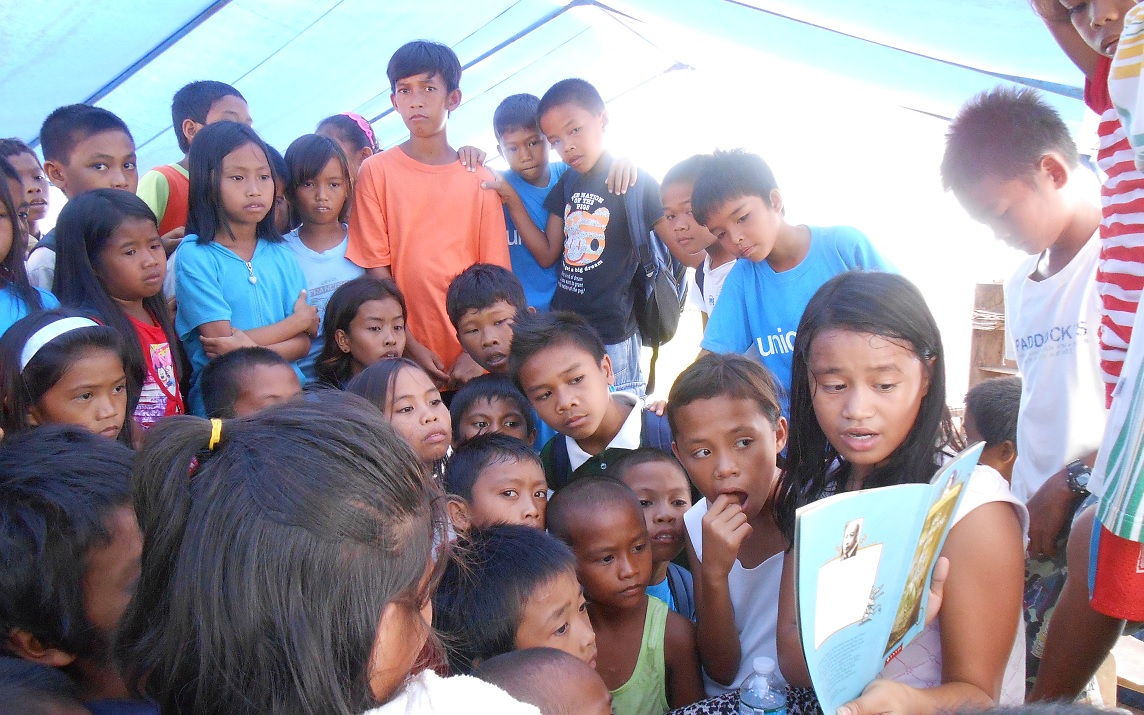
World Humanitarian Summit: Update on Philippine core commitments
The upcoming World Humanitarian Day on 19 August is an opportunity to take the discussion of core commitments made during the World Humanitarian Summit (WHS) in Istanbul, and turn them into concrete action. At the Summit. the Philippines pledged to sustain political engagement to address the root causes of conflict by investing in inclusive and peaceful societies. The Philippine delegation also committed to uphold international laws and norms on human rights, armed conflicts and refugees and to work for the passage of the Internally Displaced Persons (IDP) Bill. In terms of disaster risk reduction, they stated that the country would accelerate the reduction of disaster and climate-related risks by: open sharing of risk information and common and fundamental operational data sets among Disaster Risk Reduction Management (DRRM) actors across the emergency cycle; capacitating local actors, governments and Civil Society Organizations (CSOs); and continuing to engage the private sector in disaster risk reduction initiatives. Lastly, the delegation pledged to enhance financing and social support to vulnerable communities by implementing disaster risk financing and increasing investment for risk resilience.
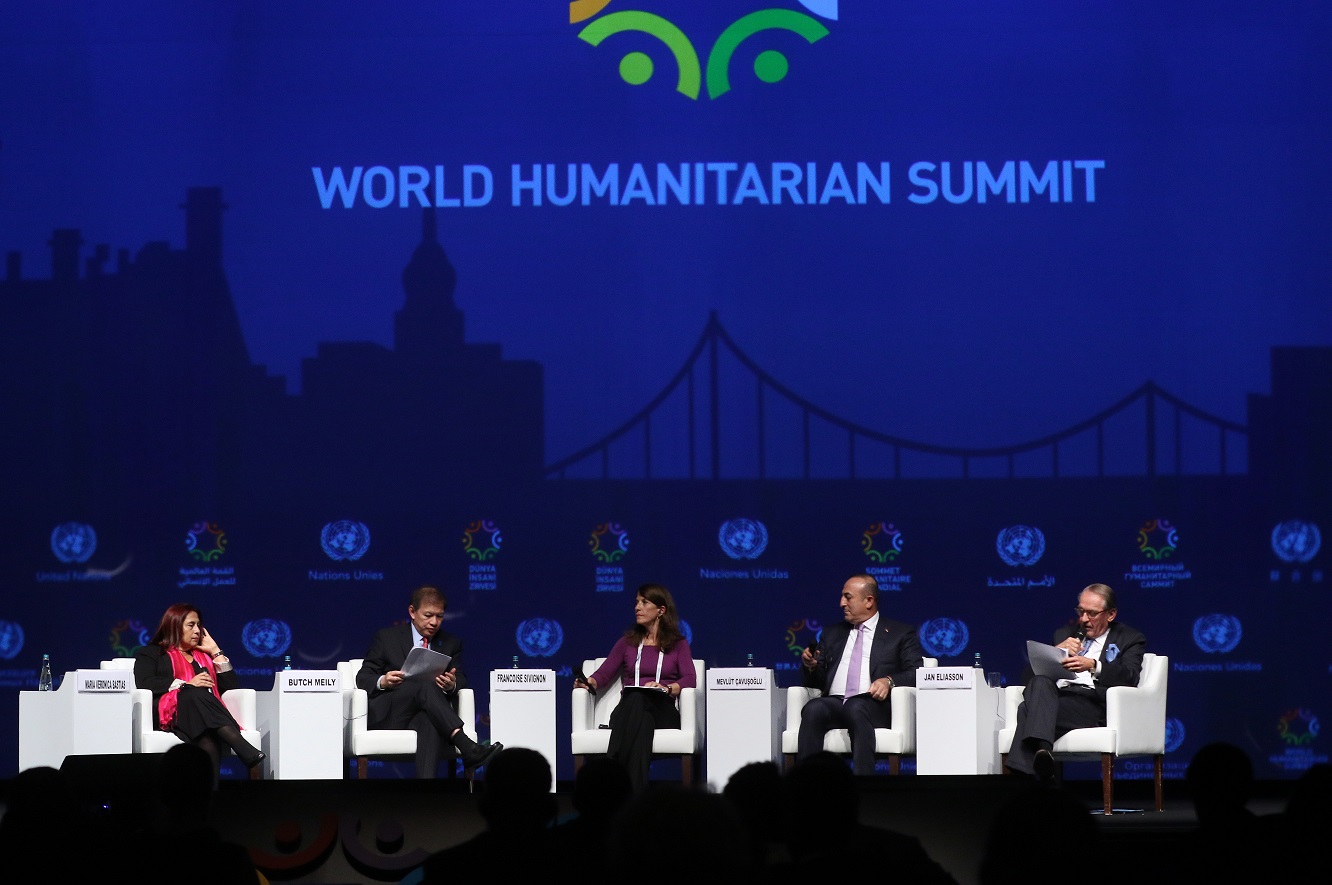
Mindanao peace process
The current administration’s efforts toward continuing the peace process in Mindanao is a positive step towards finding political solutions to end conflict. President Rodrigo Duterte reiterated during his 25 July State of the Nation Address (SONA) his desire to end the decades-long struggle in the southern Philippines, and to strengthen the government’s counter-terrorism programmes. Non-state armed groups Moro National Liberation Front (MNLF) and the Moro Islamic Liberation Front (MILF) recently signed a joint agreement aimed at coordinating their separate peace plans with the government.
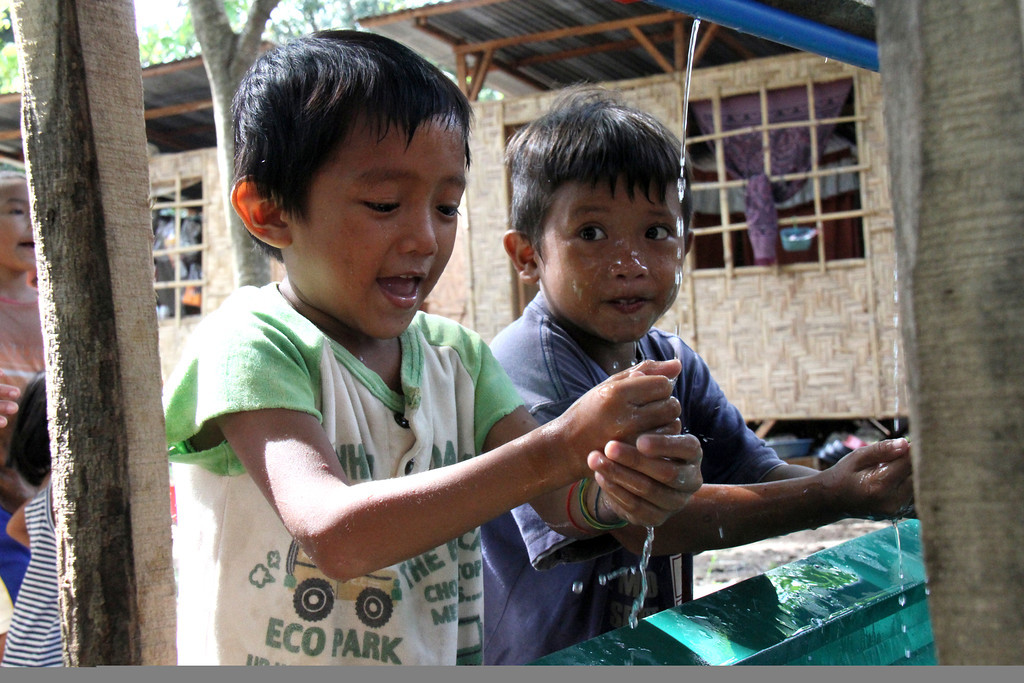
IDP and human rights legislation
The IDP bill, which seeks to protect the rights of those displaced by armed conflict, violence and natural disasters, was vetoed in 2013. Citing issues with the constitutionality of certain provisions, the bill failed to be passed by the Aquino administration. In May 2016, however, President Aquino signed the Children’s Emergency Relief and Protection Act, a law improving care and protection for children affected by disasters. The law requires an increased surveillance against child trafficking and other violence against children in the aftermath of disasters and calamities. The act also sets a system in place of restoring civil documents for children and their families, and protection against exploitation. Presently, efforts at legislation aimed at protecting human rights and those displaced were recently filed by Representative Harry Roque. On 30 July, the congressman filed House Bill 222, which seeks to protect the rights of IDPs, and House Bill 226, which seeks to amend Republic Act 10368 or the Human Rights Victims Reparation and Recognition Act of 2013.
Commitment to environmental protection
Disaster preparedness and climate change advocates are taking note of the administration’s priorities in environmental concerns, lauding the appointment of environmental activist Gina Lopez as the head of the Department of the Environment and Natural Resources. President Duterte reiterated in his SONA the administration’s commitment to reviewing permits granted to mining and logging companies. Compliance with environmental regulations is a significant aspect of mitigating disasters. The impact of earthquakes, floods and typhoons are all heightened when forests are denuded and waterways are poisoned by chemicals.
Engaging local actors and the private sector
The participation of Civil Society Organizations (CSOs) in the World Humanitarian Summit was a welcome opportunity for local humanitarian actors to reaffirm their important role in disaster preparedness, response and resilience. Calling it the “Balik-Bayan” strategy
(a term used by CSOs to denote localising humanitarian response) , their consortium of networks in the Philippines stressed the importance of local partners in the overall disaster preparedness and humanitarian response. On 28 June 2016, the consortium invited UN agencies, international non-government organizations and the private sector for a post-WHS feedback forum. In the resulting action plan, the feedback forum underscored some policy gaps on localizing the humanitarian response and limited avenues to make use of the existing humanitarian response platforms to engage the CSOs.
Maria Fellizar-Cagay, Lead Convener for the Disaster Risk Reduction Network Philippines (DRRNetPhils) said during the forum that “for us local NGOs and CSOs, we are advocating for a Balik-Bayan approach to strengthen our humanitarian and preparedness work. We want to make use of the existing response mechanisms and provide inclusive opportunities to form partnerships in support of local humanitarian actors”.
The World Humanitarian Summit generated new momentum to move the Agenda for Humanity to deliver better for people. Working to fulfill the core commitments will be a global effort and everyone, from the highest level of Government to affected communities, to ordinary citizens will have a role to play. World Humanitarian Day, and the upcoming United Nations General Assembly High Level Meeting on 19 September 2016, will be meaningful opportunities to champion commitments made.
“The essence of Balik-Bayan is to make use of the existing humanitarian response mechanisms at the same time provide more inclusive opportunities to localize funds and identify partnerships to support local humanitarian players.”
-Maria Fellizar-Cagay, Disaster Risk Reduction Network PhilippinesLa Niña watch in Maguindanao province
After long months of drought, the intermittent rains in April this year enabled farmers in themunicipality of Kabuntalan, Maguindanao province to take the opportunity to plant their crops with hopes of recovering their losses from previous months. But just two weeks short of harvesting, monsoon rains in June submerged the fields, destroying their crops. The municipal authorities attribute the problem to the need for improved flood control measures and a community master plan to address their long-term development needs. For local government, until these needs are addressed, farmers will continue to be affected by flooding.
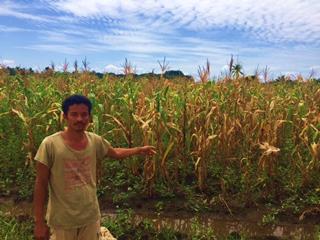
Farming in Kabuntalan
Kabuntalan is located in a marsh area that frequently floods. Two major rivers, the Tamontaka and Kabuntalan, pass through this area. There have been times when even with no rainfall in the municipality, floodwaters still came, mainly flowing from nearby areas. The Municipal Agriculture Officer stressed that farmers are at the mercy of increasingly unpredictable weather systems and other environmental concerns. The challenge of estimating the best planting time affects their level of preparation for the possible onslaught of La Niña.
The communities’ main sources of livelihood are fishing and farming. With frequently overflowing riverbanks, municipal officials are already considering long-term fishery projects as an alternative livelihood for agricultural farmers.
Farming in Kabuntalan is rain-fed and, as part of preparation for La Niña, the Municipal Agriculture Officer advised the communities to plant early maturing varieties of crops. But some farmers have lost hope in farming.
Extent of crop damage
“As of 4 July, 205 hectares (ha) of farmland planted with corn, rice, mung beans and assorted vegetables were affected by the flooding. Of these, the provincial Department of Agriculture says about 108 ha have no chance of recovery. The municipal government is expecting the number to rise as more farmers report damage.
Akmad Toni, 32 years old, planted his 3 ha of rented farmland with corn in May this year, during the anticipated planting season. He took out loans to pay the P5,100 (US$110) rent on the land and purchase bags of seeds. He is expecting to harvest 50 to 60 sacks per hectare and earn P20,000 ($435) per hectare. The selling price of corn ranges from P10 to P14 ($0.22 to $0.30) per kilogram depending on the time of year. But, when the corn crops were already in the vegetative stage, floodwaters submerged all his hard work and investment. About half of his farmland is totally damaged. This is his third successive seasonal loss and he is having difficulty getting out of debt. “Even faced with this and having been told about La Niña,” he said, “I will still farm and take my chances, because there is nothing else I count on.”
Akmad’s wife works as a volunteer teacher. They have two young children, ages 2 and 3 years old. Despite the repeated hardships, Akmad remains hopeful that one day he reaps enough to sustain their daily needs.
Farmers are at the mercy of increasingly unpredictable weather systems. The challenge of estimating the best planting time affects their level of preparation for La Niña.
As of 4 July, 205 hectares of farmland were affected. Of these, about 108 hectares have no chance of recovery.
Reflecting on rapid response projects after Typhoon Koppu
Typhoon Koppu and international response
In October 2015, central and northern Luzon were inundated by heavy rains from Typhoon Koppu (known locally as Lando), a Category-3 storm that was the most destructive typhoon that year, displacing over a million people at the height of the disaster and causing over $200 million damage to agriculture.
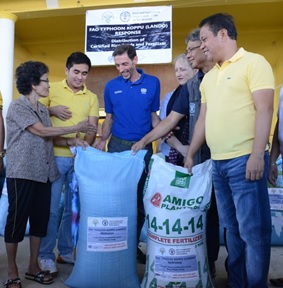
In the wake of the typhoon, international aid agencies participated in a multi-sectoral rapid damage assessment and needs analysis led by the Government. While overall the Government was able to respond to the needs of the affected people, some agencies identified procurement processes and other gaps that were hindering their ability to rapidly provide the assistance required. The Departments of Agriculture (DA) and Health (DOH) turned toward their strong relationships with the Country Offices of the Food and Agriculture Organization (FAO) and World Health Organization (WHO) for support.
Utilizing the Central Emergency Response Fund for coordinated rapid response
FAO and WHO coordinated closely with their Government counterparts to develop projects that would serve the most-affected communities in four provinces in the central region to mitigate food insecurity and address urgent risks of malnutrition and diseases among the affected communities.
In November 2015, the UN Central Emergency Response Fund (CERF) awarded $1.5 million toward these projects. Just over one million went to FAO, which added another half million dollars of its own funding. Still, this was well short of the nearly $5 million it required to fully implement its project. WHO also added about $200,000 of other funding to their project, but fell short of the $900,000 it estimated was needed.
Reflecting on project results and lessons learned
FAO initially targeted 13,000 farming families, or approximately 65,000 people, with rice seeds and fertilizer, but managed to help an additional 9,700 families with just fertilizer, helping a total of 113,500 people by the end of their project. At the same time, WHO reached its target of serving 212,000 people with mobile health services. Further, during its project, nearly 7,000 children were screened for acute malnutrition. Of those screened, less than 40 were identified with acute malnutrition, and 35 of those were managed at the community level. Both FAO and WHO report that partnership terms and arrangements among stakeholders were strengthened through emergency response activities. The collaborative relationships also afforded refinements in the implementation arrangements. Most importantly, the projects supported local government initiatives and complemented the Government’s efforts for early recovery and livelihoods.
A good practice that emerged was coupling coordination with national government agencies and close collaboration with local governments to facilitate implementing project activities. These actions were critical to more precise targeting of beneficiaries while avoiding service overlaps and wasting precious resources. This allowed for more efficient response. Participation of beneficiaries in the relief and rehabilitation process was important in promoting ownership and empowerment. Doing this during rapid response in the days and weeks following a disaster had its own challenges, but participatory, inclusive planning with project stakeholders ensured response activities were tailor fit to the felt needs and conditions of the beneficiaries. As FAO and WHO learned, the process for targeting beneficiaries must be flexible to accommodate unforeseen changes in vulnerability patterns, needs and local contexts.
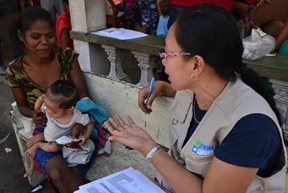
Another good practice, particularly noted by FAO, is that even though these were rapid response projects, planning for recovery from the onset was imperative. Through the provision of seeds and other farm inputs, the DA and FAO laid the path for restoration of livelihoods and recovery of the affected families. FAO has recognized the need to constantly build capacity, promote more accountable ways of working and lead reflective action amongst project partners at all levels.
CERF remains a key tool for the international humanitarian community to be better prepared to support the Government when disaster strikes.
While overall the Government was able to respond to the needs of the affected people, some agencies identified procurement processes and other gaps that were hindering their ability to rapidly provide the assistance required.
Participation of beneficiaries in the relief and rehabilitation process was important in promoting ownership and empowerment.
The process of targeting beneficiaries must be flexible to accommodate unforeseen changes in vulnerability patterns, needs, and local contexts.
National Disaster Consciousness Month in July
The National Disaster Risk Reduction and Management Council (NDRRMC) through the Office of Civil Defense (OCD) launched National Disaster Consciousness Month with the theme “Kahandaan at Pagtugon sa Sakuna, Tungkulin ng Bawat Isa” (Preparedness and Response in Disaster, is the Responsibility of each one”. NDRRMC partners launched activities to raise awareness of the country’s disaster preparedness programmes. The Department of Social Welfare and Development (DSWD) also conducted a Disaster Response Communication Training and Field Testing to highlight the importance of effective communication in disaster response.
